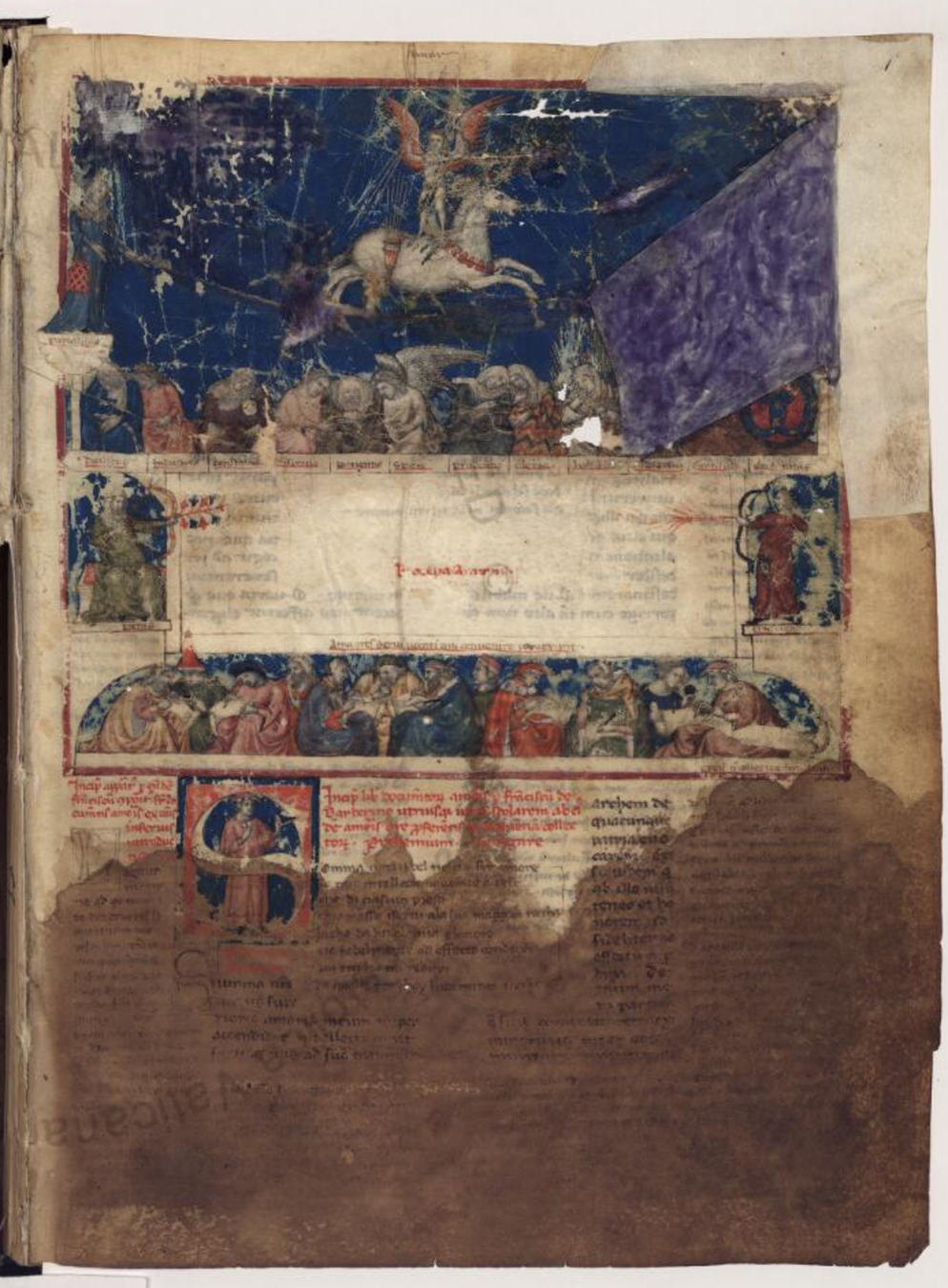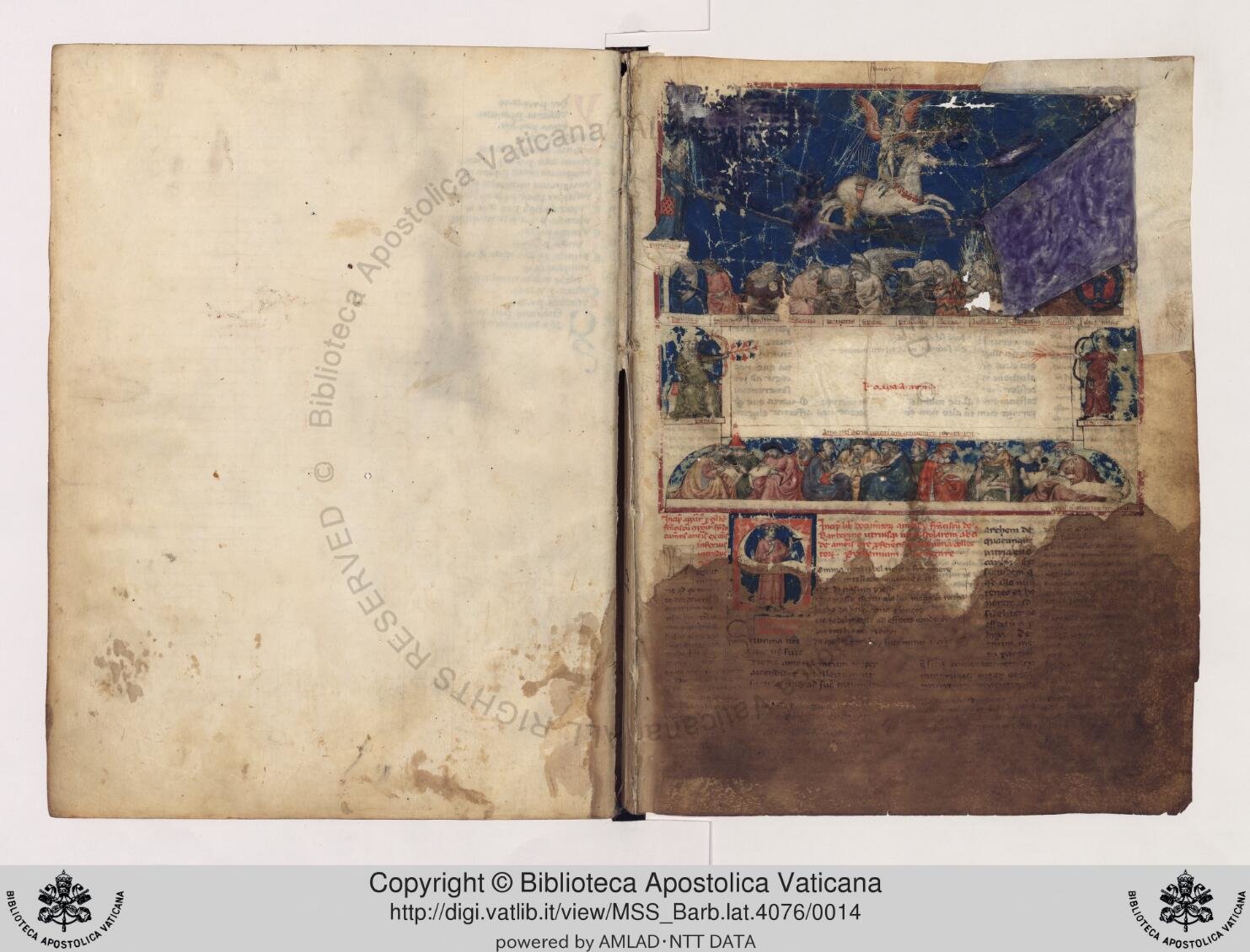Introduction to IIIF
(The International Image Interoperability Framework)


Tiziana Mancinelli
Università di Venezia Ca' Foscari
Universität zu Köln
@



Digital scholarly editing and IIIF International Image Interoperability Framework?



The International Image Interoperability Framework:
is a set of application programming interfaces (APIs) based on open web standards and defined in specifications derived from shared real world use cases.
is also a community that implements those specifications in software, both server and client.
What is IIIF?


A framework
What is IIIF?
The International Image Interoperability Framework (IIIF) is a set of shared application programming interface (API) specifications for interoperable functionality in digital image repositories.


The objective of the IIIF Presentation API is to provide the information necessary to allow a rich, online viewing environment for primarily image-based objects to be presented to a human user [...]. (Yu 2011, 467).
What is IIIF?



This is the sole purpose of the API and therefore the descriptive information is given in a way that is intended for humans to read, but not semantically available to machines (Yu 2011, 467).
What is IIIF?



[... It] explicitly does not aim to provide metadata that would drive discovery of the digitized objects reated for a specific development domain and normally contains a set of common and reusable building blocks so that developers can use, extend, or customize for their specific business logic (Yu 2011, 467)
What is IIIF?


Why (are we all crazy for) IIIF?
Using JSON-LD, linked data, and standard W3C web protocols such as Web Annotation, IIIF makes it easy to parse and share digital image data, migrate across technology systems, and provide enhanced image access for scholars and researchers. In short, IIIF enables better, faster and cheaper image delivery.



Why (are we all crazy for) IIIF?
IIIF frees up your images to be creatively reused. Because scaling, cropping and zooming become trivial operations, you’re free to concentrate on the important task of providing a great user experience.


You also benefit from great image viewing software written and maintained by other people, so no need to reinvent the wheel.


Begin by reading this quick-start page on the IIIF site. Then the next bit is generally to select and install suitable server software, then upload your images to it in a compatible format (JPEG2000 or pyramidal TIFF).
Voilà, you have implemented the IIIF Image API!
How to start


Essentially, a manifest is just a JSON file that consists of several main sections, most of which are optional depending on your use-case.
What is a manifest?


- top-level attributes that are boiler-plate required values, or e.g. ‘label’: the title of the image, or ‘license’: the associated copyright license
- ‘metadata’ that allows you to provide arbitrary key-value pairs that will be displayed by viewers such as Mirador and Universal Viewer. These don’t have to conform to any metadata schema, just simply provide the information you want to present.
What is a manifest?


- sequences’ that provide the image(s) that your manifest describes, as a list of ‘canvases’.
- ‘structures’ that optionally group images into sections. E.g. chapters of a book.
- ‘service’, ‘related’, ‘seeAlso’ sections that optionally provide links to related resources or associated IIIF services such as the content search or authentication APIs.
What is a manifest?


The first API developed within the IIIF project concerns the identification of an image and its specifications through a URI conveyed through the HTTP or HTTPS protocols.
{scheme}://{server}{/prefix}/{identifier}/{region}/{size}/{rotation}/{quality}.{format}

Text

International Image Interoperability Framework


This solution allows a client to "point" to an image available on the Web by requesting, at the same time, the supply of the same by the server with specific formal parameters explicitly expressed in the formulation of the same URI according to this syntax:
{scheme}://{server}{/prefix}/{identifier}/{region}/{size}/{rotation}/{quality}.{format}International Image Interoperability Framework


At this point, the parameters expressly defined by IIIF for the supply of images come into play, which must be listed in the order required
The parameters of the Image Request URI include region, size, rotation, quality and format, which define the characteristics of the returned image. These are described in detail in Image Request Parameters
{scheme}://{server}{/prefix}/{identifier}/{region}/{size}/{rotation}/{quality}.{format}- How can we link our projects to IIIF?
- How can we edit the images?
- How the we view those images?


Questions


TEI (Text Encoding Intiative) <zone>
{scheme}://{server}{/prefix}/{identifier}/{region}/{size}/{rotation}/{quality}.{format}Text linked to images?

tiziana.mancinelli@unive.it
@tizmancinelli

Forme materiali e senso.
Soprattutto nel testo autografo o manoscritto (Storey 2004: 131-171), ma anche in quello gutetenberghiano (Chartier 2006) la dimensione materiale è in grado di orientare il senso e veicolare significati secondo modi e procedure autonome e parallele al cosiddetto ‘testo in sé’ (invariante). Tale aspetto, che nella dimensione digitale è rappresentato dall’interfaccia, è quasi sempre negletto nei modelli di testo e negli schemi semiotici di ascendenza strutturalista.
IIIF
By Tiziana Mancinelli
IIIF
- 814



